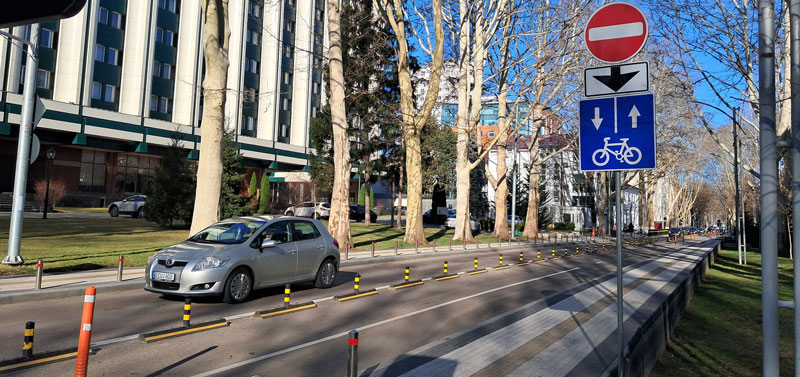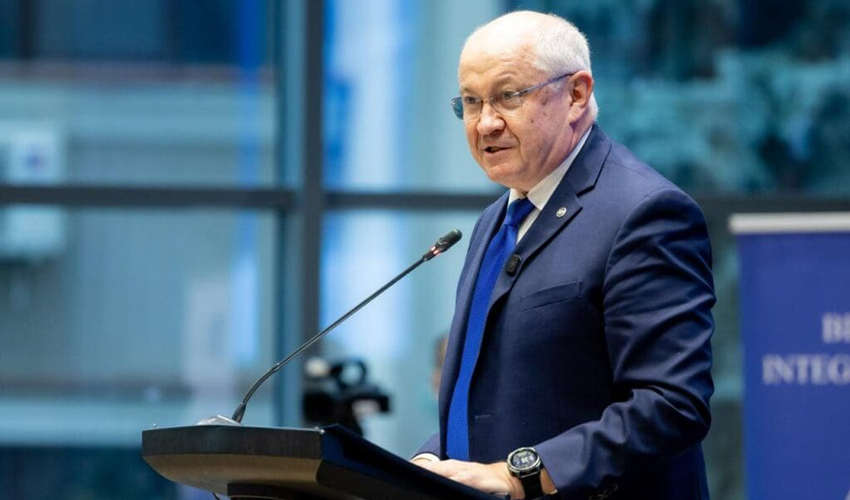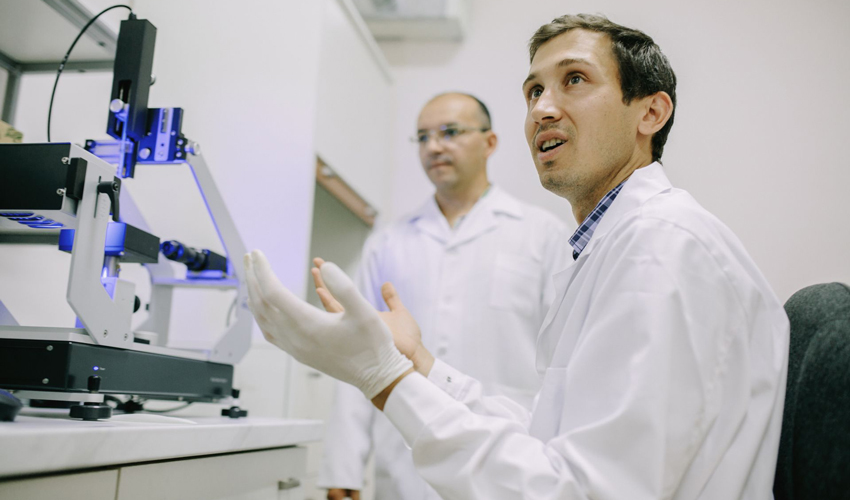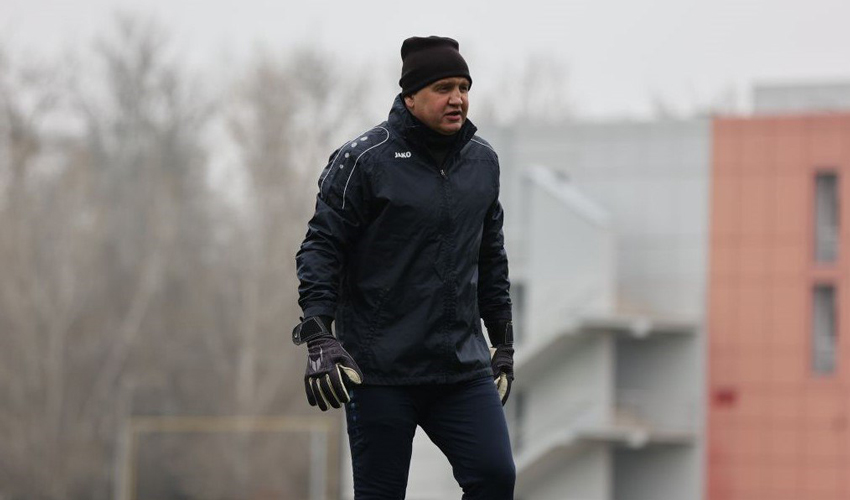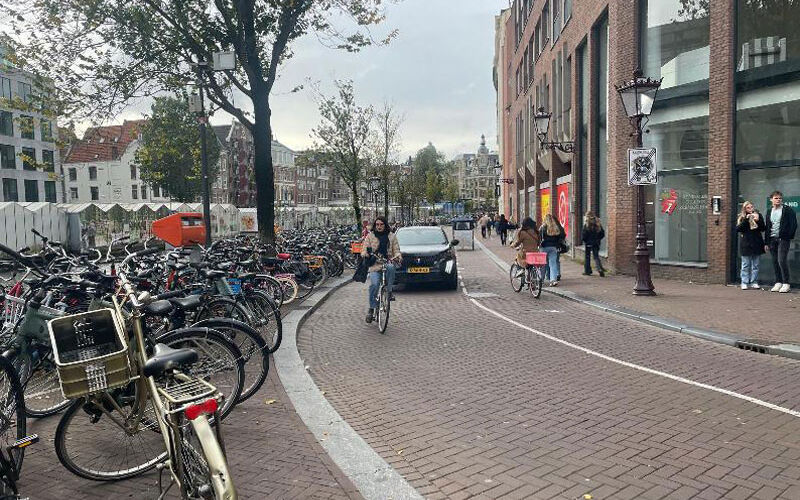
The NGO “Center for Policy and Reforms” (CPR Moldova) has prepared a large-scale analytical study “How to reduce air pollution in Chisinau by means of ecological transport”, which compares the practices applied in the capital of Moldova and in the main city of the Netherlands – Amsterdam. In particular, the authors were interested in the level of introduction of bicycles into daily life.
A matter of national importance
Amsterdam was chosen for comparison for several reasons. Firstly, it is comparable to Chisinau in terms of population, with only 150,000 more people living there. Secondly, it makes sense to take an example from it: it is a leader in terms of applied environmental technologies in transportation even in the European Union. Moldova, on the other hand, lags behind almost all countries of the continent in this field. Thirdly, the Netherlands is recognized worldwide as a “country of cyclists”, 63% of Amsterdam residents commute to work daily by this transport.
There are 264,000 registered cars in Chisinau and only 230,000 in Amsterdam. But there are 22 million bicycles for the 17 million inhabitants of the Netherlands. While, according to the National Bureau of Statistics of Moldova, in 2023, there will be 13 of these vehicles per 100 households in Chisinau.
It is true that the Netherlands started to implement a policy of encouraging cycling back in the 19th century. The population began to perceive the bicycle as an efficient means of transportation, including from an economic point of view. Even today it is cheaper for most Dutch people to get to the store or work by bicycle than to pay for gasoline or taxes for using a private car. For Chisinau it is also relevant: traveling around the city in a car during peak hours costs about 25 lei per 10 km.
The total length of bicycle lanes in the Netherlands in 2023 reached 153 thousand kilometers. In 2022 alone, the Dutch authorities announced an investment of €780 million in cycling infrastructure. Together with annual local contributions, the total value of the investments will exceed €1 billion by 2030.
Desire and opportunity
But in Moldova, too, the number of cyclists is growing every year. According to a study conducted by Watchdog.md, the first edition of VeloHora in 2009, an annual event to popularize bicycle mobility, saw 1,000 cyclists participate, and in 2016 the number of participants reached 14,000.
In 2018, community activist Andrew Tudos conducted an online survey asking if respondents would like to use bicycles and what prevents them from doing so. Of the 819 participants, almost 90% answered that they would use this mode of transportation, but only if the appropriate conditions were created. The main reasons that prevent Chisinau residents from switching to bicycles are: fear of transport, lack of specialized parking spaces and underdeveloped infrastructure.
Another study, conducted by Magenta Consulting, shows that the majority of bicycle owners live in rural areas or small towns, where there is no public transportation. 28% of respondents stated that they use their bicycles daily, 16% – 2-3 times a week, and 25% do not use them at all.
In 2021, the Chisinau City Hall published a draft Alternative Transportation Development Strategy, based on a survey conducted in 2020 among 2,000 respondents. According to its data, 95% of the capital’s residents would use alternative transportation if they had the necessary infrastructure.
The draft strategy envisages the following:
– Creation of a network of alternative transportation routes with a total length of 200 km, which will connect all sectors of Chisinau;
– changing the attitude of residents towards alternative transportation;
– increasing the share of alternative transport in relation to the total share of daily transportation of all types of transport to 1%;
– increasing the number of bicycle parking spaces near public institutions, educational and leisure centers.
Currently, the capital’s Mayor Ion Ceban recognizes that the city streets are unfriendly to cyclists and the necessary infrastructure is still lacking.
When asked by LP, the Chisinau Municipal Council’s General Department of Urban Mobility said that they “intend to update and adjust the Strategy in the near future, after which it will be submitted to the PBC for approval.”
And they added that in the period 2021-2024, dedicated lanes, combined with bicycle lanes, with a total length of 45 km, were equipped on 17 streets of the city.
In addition, projects to expand the dedicated lanes on Hincesti Street (the section between Aleksej Matejevića Street and Miorica Street) are being coordinated, as well as the preliminary design of Maskouski Avenue is under development.
“The biggest achievement in four years was marking the track on August 31, 1989,” said Yuri Kaluza, administrator of the GIANT chain of bicycle stores and a cycling enthusiast. Another success he mentioned was allowing cyclists to ride in public transportation lanes.
Bringing it to fruition
However, some bicycle lanes are only formally marked. There are cases when the path is interrupted by a pole, underpass or other infrastructure elements. In these places, cyclists must get off their bikes and walk, otherwise they face a fine. This has happened in the Valle Morilor Park, where the police stop cyclists on a few meters long section that interrupts the path.
In general, most bicycle paths cannot be considered legal because they are not equipped with special road signs (white bicycle on a blue background). The lack of special traffic lights for cyclists, parking lots and continuous roads that would allow unimpeded movement from one end of the city to the other make it difficult to move freely.
Moreover, the city still lacks the concept of building paths adjacent to main streets that would facilitate access to certain destinations such as stores, public facilities, recreational areas, etc. Such a solution, as the practice of other countries shows, would also contribute to making the city car-free by providing an opportunity to reach the destination using alternative modes of transportation.
Indeed, the hilly terrain of Chisinau makes cycling difficult in some areas. In this case, an alternative could be the development of a bicycle rental system or electric bicycles/scooters, or equipping public transport with special facilities to carry bicycles.
Another problem is the lack of awareness of other road users to comply with signs and road markings (where available) restricting bicycle lanes. Drivers often park or leave their vehicles on these paths, and violations go unpunished in most cases. In 2025, the fine for illegal parking ranges from 900 to 1,500 lei.
At the moment, the lack of infrastructure for cycling and the lack of a culture of respect for cyclists on an equal footing with other road users makes this mode of transportation around the city dangerous and potentially fatal. In 2023, there were 231 accidents involving cyclists and scooters in Moldova, representing 11% of the total number of accidents. 15 people died.
Neighbors set an example
If we look beyond the distant and rich Netherlands, we can find successful examples of urban cycling development in our neighbors, the authors of the study say.
In Romania, for example, the Transylvania region has made notable progress. In the city of Arad, bike lanes totaling more than 135 kilometers were built in 2022 alone, and their length is increasing every year. In Timisoara, Orade and Sibiu, the average length of the lanes is 85 km and the authorities are actively promoting bicycle rental services.
In parallel, electric bicycles, which can also be rented, are becoming increasingly popular in Romania. They are convenient for use in cities located mainly on hills – in this respect they are similar to Chisinau. Similar solutions have been implemented in Piatra-Niamca, Cluj-Napoca and Timisoara.
